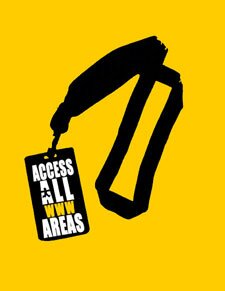 Today I am writing about a topic which is close to my heart: accessible design. In simplest terms, accessible design is making sure your web content is available and understandable to all audiences, including people with visual or other disabilities.
Today I am writing about a topic which is close to my heart: accessible design. In simplest terms, accessible design is making sure your web content is available and understandable to all audiences, including people with visual or other disabilities.
Accessible web design allows individuals who are visually impaired or non-readers to experience web content through screen readers, which translate text into speech. The practice of accessible design also includes modified or unique interfaces, like single button computer input devices and touch screens. It is a part of a larger movement called Universal Design, which seeks to make all parts of the world accessible for all people, regardless of ability.
This article will focus on web design. Future pieces may explore various computer interface devices designed for individuals with disabilities, but today we’ll be limiting our focus to how designers might better address the needs of all readers.
Incorporating basic principles of accessible design begins with two simple steps in the design process:
1. Use resizable fonts. Many visually impaired individuals use screen magnification programs to increase the readability of a site. Using images instead of actual text to display wordy content may look great, but will be impossible for someone using a magnifier to read.
2. Use the
 Additionally, you should avoid several other flashy trends in design, including white or pastel (or worse, darker colored) text on a dark background. Many web users complain that it is difficult to read. While dark text on a light background, preferably with a very high contrast, can be a little boring, visually, it will increase the usability of your site a great deal.
Additionally, you should avoid several other flashy trends in design, including white or pastel (or worse, darker colored) text on a dark background. Many web users complain that it is difficult to read. While dark text on a light background, preferably with a very high contrast, can be a little boring, visually, it will increase the usability of your site a great deal.
Several common sense steps can also be taken to increase accessibility, including using tables only to display truly tabular information instead of for layout (use CSS to style your pages, use HTML to build the structure.) Ensure your site remains visible and readable in HTML only, as many screen readers will use the underlying HTML to interpret the screen contents for the listener.
Another reason to focus on accessible design is that there is considerable overlap between designing web content for people with disabilities and designing content for delivery through mobile devices. The WC3 has issued guidelines for optimizing content both for accessibility and for the mobile web. Designing to meet both sets of guidelines together can make the process more efficient.
A full set of recommendations for accessible design can be found in the WC3 Web Content Accessibility Guidelines (WCAG). Recently updated in December of 2008, WCAG 2.0 presents 12 guidelines for ensuring web content is perceivable, understandable, and operable for all audiences.
Creating websites that can be experienced and enjoyed by everyone is the right thing to do; in certain cases it may even be a legal requirement. Accessible design is becoming even more important today, as many sites begin to utilize free-form or Flash based designs which render them unreadable to many individuals with disabilities. In fact, a focus on accessible design may go a long way to improving your site’s overall quality and attractiveness for all visitors.

{ 1 comment… read it below or add one }
raf
Thanks. for article